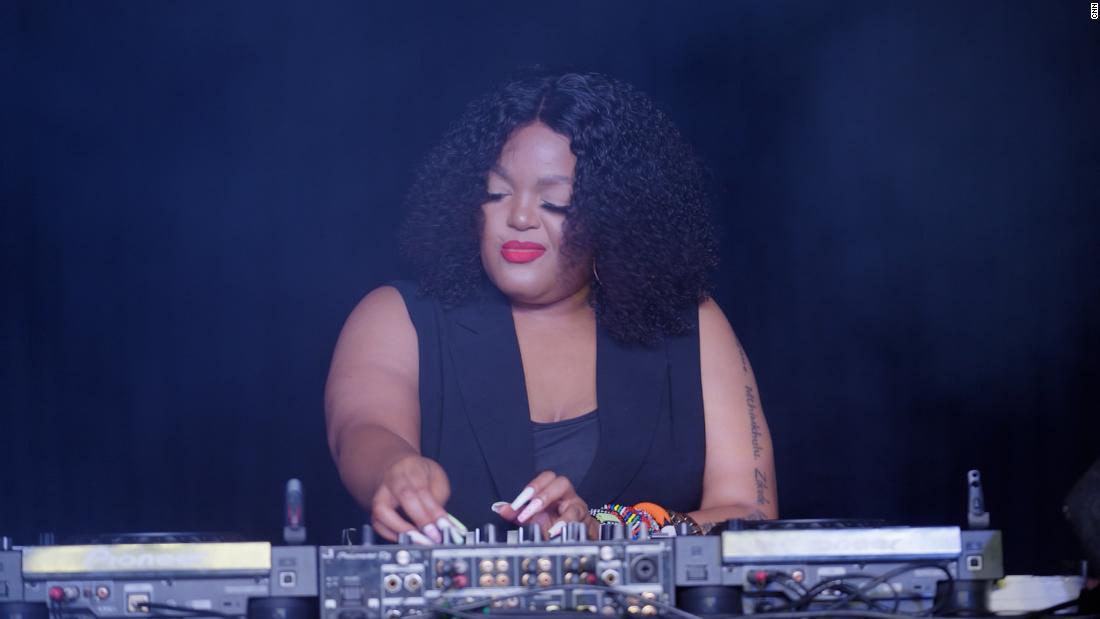Seeping out of car windows and overflowing from clubs, Amapiano is more than a genre of music — it is influencing style and dance and making an impact on South Africa’s music industry. Believed to have started in 2012, this underground trend exploded in popularity during the Covid-19 pandemic, and has been on the rise ever since.
“We noticed a lot of our youths at the end of 2019 starting to use Amapiano music to create their food videos, their dance videos, their fashion videos, memes. And we really saw people embracing the genre and wanting to engage with it,” says Yuvir Pillay, music operations manager at TikTok South Africa.
He says Amapiano is the country’s biggest musical genre on TikTok “We haven’t seen a local music genre take over a platform in this kind of huge escalation in a very long time,” he adds.
Uncertain origins
While its popularity is unquestioned, the birth of Amapiano — which means “the pianos” in South Africa’s Zulu language — is often the subject of debate.
The genre’s roots are disputed says AshMopedi, host of the Amapiano-dedicated YouTube channel Groove Cartel. “Perhaps it comes from the Gauteng region [northeastern province that includes Johannesburg and Pretoria], where its origins can be traced, but as to who is that one person that created Amapiano, it’s a difficult thing,” he says. “Whoever it is, please come out and let us know.”
Some argue the infectious sound is rooted in Kwaito, a style of music which blended house beats with hip hop in the 1990s. Music producer, record label owner, and Kwaito pioneer Oscar Sibonginkosi Mdlongwa, known as Oskido, says Kwaito emerged following a period of political change, that saw the release of Nelson Mandela and the decline of apartheid.
“The younger generation at that time, we started creating our own music, which we called Kwaito. We used to take house music, slow it down and from there, we reprogrammed the music,” he says.
Fast forward two decades and Amapiano emerges. It features the same slowed-down house beats as Kwaito, but also incorporates jazz, synths and percussive basslines.
DJs have since played a key role in popularizing the genre. Vigro Deep, a 20 year old Pretoria-born DJ, has taken the Amapiano scene by storm. His keen ear for music has helped catapult him to international success.
“I started producing by the age of 16, (when) Amapiano was something that was trending,” Vigro Deep says.
He says he takes pride in sharing the sound of the townships with the world — one that is innovative, collaborative and disruptive in the way it’s transforming an industry.
“I think people are now happy that we have our own genre,” he adds. “We started something from scratch. It makes us who we are. It’s a sound where we can say, ‘this is us; this is South Africa, this is Africa.'”
A more inclusive sound
Although Amapiano started out as a genre dominated by male artists, more women are now stepping onto the scene — from DJ’ing and dancing to singing and even fashion design.
Part of the draw is what dancer Bontle Modiselle describes as an “inviting” style.
“When I think about Amapiano, I think about it being the perfect representation of what the Black South African youth today looks like and the fashion, what they feel like, what they sound like in their sounds, how they move in their dance moves,” she says.
“The visual representation of Amapiano is such that it breeds from a ground of familiarity,” she says. “You’ll see a lot of Kwaito-esque movements that are reimagined in the look of Amapiano today.”
At the same time, that inviting style makes it accessible. “It just allows a culture where anyone, from anywhere, of any age can get together and do the same moves and feel like they’re a part of the same story,” she adds.
Yet success for women in Amapiano hasn’t come easily.
“Now you’re seeing a girl trend every single day and seeing this population of women in the industry grow by leaps and bounds,” she adds.
A genre for the future
Whether Amapiano is here to stay or it evolves into yet another new sound, one thing is certain — the genre’s success has impacted the music industry in South Africa.
“(Amapiano) has changed the way the record business works,” says Oskido. “You don’t need all these big companies; social media these days has become virtual radio stations.”
“In 20 years’ time, when we all look back at this period in time when we speak about the pandemic, Amapiano is going to be one of those things that comes up in conversation.” says YouTube host AshMopedi. “I feel that it’s one of those genres that just a mainstay, it’s not going to go anywhere.”
The genre is a “lifestyle,” adds Radebe, and though Amapiano is going global, it’s important to remember where it came from.
“It’s a culture. It’s a saving grace. It is a lifeline,” she says. “I think it’s really important that we don’t change the narrative, twist the narrative of the fact that this is a South African sound — that this is nurtured, it is built, it is grown here.”

